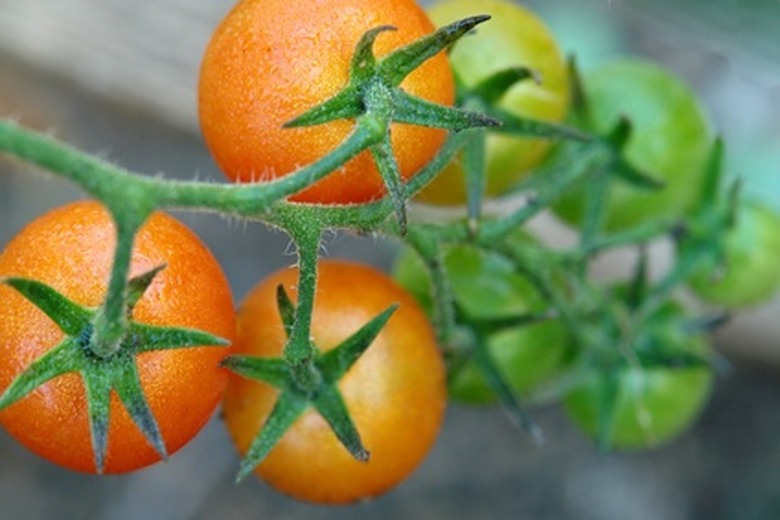Growing Vegetables In North Georgia
Growing vegetables in Northern Georgia can be a challenge. The soil of northern Georgia is primarily red clay. This is the result of oxidation caused by Georgia's warm climate and a breakdown of granite from the Blue Ridge Mountains. For vegetables to grow well, this clay soil must be amended with organic materials and sand to aerate the heavy texture. It is not difficult to amend soil, but you must have the proper equipment.
Step 1
Test your soil with a pH tester available from any commercial garden center. A pH tester will help you determine the current pH of your soil. You can then change the structure of your soil so that the pH is optimal for growing plants. Soils in northern Georgia range in pH from 4.0 to 8.0. Most vegetables grow well around a pH of 6.0 to 6.5. Plants such as blueberry bushes grow better at a pH of 4.5.
- Growing vegetables in Northern Georgia can be a challenge.
- For vegetables to grow well, this clay soil must be amended with organic materials and sand to aerate the heavy texture.
Step 2
Break up your soil to a depth of 6 inches with a rototiller. Spread soil amendments over the top of the soil to a depth of 4 inches. Soil amendments include sand and gypsum to areate the soil and increase drainage and compost, and manure and fertilizer to add nutrients to the soil. Powdered limestone will raise the pH of the soil while powdered sulfur will lower the pH. Mix these amendments with the soil by passing the rototiller over the land again. Water the soil and allow amendments to sit for several weeks before planting.
Step 3
Select vegetables that will grow well in the USDA hardiness zones located in Northern Georgia. The majority of Northern Georgia falls within the USDA hardiness zone 7, but parts of this portion of the state also fall within zones 8a and 6b. Most all warm-season vegetables such as okra and tomatoes can be grown from the last frost date of the spring to the first frost in fall. Cool season crops can be planted twice yearly in spring and fall for two harvests. Some cool season plants, such as lettuce, can be grown all winter long in zone 8 if they are protected from freezing with the use of floating row covers.
- Break up your soil to a depth of 6 inches with a rototiller.
- Some cool season plants, such as lettuce, can be grown all winter long in zone 8 if they are protected from freezing with the use of floating row covers.
Step 4
Plant companion plants around your vegetables to discourage insects. Good plants for repelling insects include marigolds, garlic and basil.
Step 5
Mulch around plants with straw to help hold in moisture to the roots and to keep weeds from growing. Weeds and other vegetation that remain in the garden can create a habitat for beetles, worm larva and other insects that harm your vegetables.
Things Needed
- PH tester
- Rototiller
- Powdered limestone
- Powdered sulfur
- Sand
- Gypsum
- Compost
- Balanced (10-10-10) fertlizer
- Vegetables
- Marigolds
- Basil
- Garlic
- Straw
